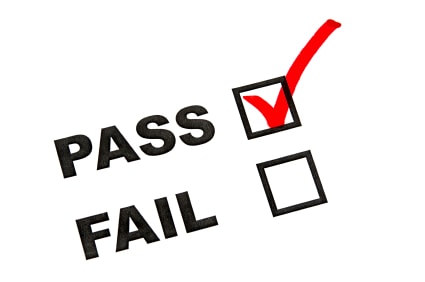So, results are in. We have official been graded using Ps and Hs. How does it feel? We’re not really sure.
We have no feelings attached to P or to H, whereas we had a kind of sense of what A-B-C-D meant. Perhaps this is because we learned the correct order of the alphabet at a young and tender age. Or because we have been graded using that kind of scale since time immemorial.
One professor explained the distribution system, indicating that roughly 50% of the class will get a P, 30% will get an H, and 15% HH. So when we tried to explain the system to outsiders (ie to those curious non-law friends and family), we put it this way: P seems like it’s “fine,” H is probably “good,” and HH seems like it’s “really good.” We also kind of figured that P is like a B, H is like a B+ and HH is like an A.
However, a different professor indicated the equivalent percentages of the letters. He said that a P is a 70-72%, H is 74-76%, and HH is 78% +. This seems to indicate our H = B+ idea is a fallacy, as at least from undergrad, we recall that a B was 70-75%, a B+ was 75-80%, A- was 80-85% and an A was 85% or above.
If getting the good grades is supposed to be a matter of putting the work in, it’s hard to know where the payoff is or if the extra hours at the library are worth it. It feels as though the P category casts such a wide net that you’re not sure what’s needed to launch you into the land of Hs (or HHs). For instance, you could work at your 60% capacity range and get a P, but it’s quite plausible that you could work at 80% and still get a P or maybe an H. Simplifying the grading system into these broader categories seems to create a disincentive to working hard.
If you compare our system to Harvard and Yale (which is the whole point, right?) the difference is that those schools don’t have the “HH” category. This Harvard/Yale system makes it seem much more plausible that a P is what the “smart average student” would get, and that the H is that higher level. Putting an HH in the mix as we do just puts the P category down farther than it’s “supposed” to be (the U of T Faculty of Law website stresses that P is “the most frequently given grade”). So if we’re going to adopt this Harvard/Yale system – why add this higher category? It seems like it defeats the purpose. These new letters are meant to emphasize our performance as within a group of smart people. Now, we don’t get clarity of the more nuanced system (with different tiers of success that ideally correlate to how hard you work) and yet also don’t get the benefits of the Good/Excellent Harvard/Yale system. Instead we’re left with “meh,” “slightly better meh” and “YAY YOU ARE AMAZING.”
It may be a bit early to fully judge how much of a success the new grading system is but at this point it’d be lucky to get an LP. According to the faculty, the aims of the new system are (1) to provide more informative feedback to students, and (2) to enhance the information value of our transcripts for employers, courts and graduate schools. These objectives are striking because…the opposite seems to have come true. We are confused. Employers are confused. And most importantly, our egos are confused.






